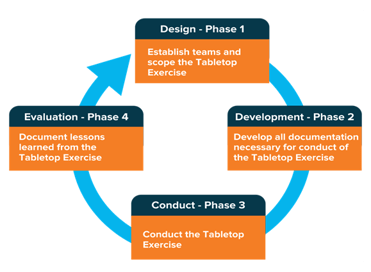
It's no secret that organizations are heavily reliant on technology to successfully run their operations. Combined with the fact that more and more organizations are migrating key processes to the cloud, the risk of cyberattacks begins to quickly mount. According to the "Cost of a Data Breach Report 2022" by IBM, 83% of organizations studied have had more than one data breach. The same report by IBM also found that in 2022 the average cost of a data breach reached a record high of $4.35 million. One final statistic that came out of this report to note is the average cost savings associated with having an Incident Response team and regularly testing the Incident Response Plan is $2.66 million.
So, what does this mean for you and your organization? Statistically speaking, the risk of a data breach has never been higher, and the cost of these events isn't getting any cheaper. Waiting to address your organization's incident response capabilities may result in a severe impact on future operations.
A great tool to assess the readiness of incident response plans, processes, and procedures is to perform tabletop exercises. A tabletop exercise utilizes a simulated scenario, designed to test your organization and employees' incident response capabilities. In this blog post, we will dive further into the key benefits of conducting tabletop exercises. Plus, it could save your organization nearly 2 million dollars!
Identifying Gaps
Tabletop exercises are an easy way to identify gaps in your organization's incident response plan. When it comes to an incident or data breach, of course, IT and security teams need to know their roles and responsibilities from a technical response standpoint. However, overlooked aspects may include how executive and leadership teams need to be involved in the process. Ensuring that roles and responsibilities, at all levels of the organization, are understood helps limit the impact of further data loss, downtime, and reputational damage.
Improving Communication
During normal day-to-day operations, we may not have the opportunity, or even the need to interact with different teams throughout the organization. When it comes to responding to an incident, it may be an all-hands-on-deck situation. A tabletop exercise is a great way to introduce collaboration between different teams to gain a better understanding of role and responsibilities.
Depending on the situation, communication may need to extend past IT and security teams. It may require that public relations or communication teams become involved to prepare a public statement or respond to media inquiries. If we are looking at a data breach of sensitive data such as personally identifiable information (PII), there are potential legal and regulatory compliance issues at play that need to be addressed by the proper teams. Tabletop exercises help your organization understand all flows of communication that may be required, both internal and external to your organization.
Employee Training and Awareness
At K logix, when working clients, we often find that an Incident Response Plan (IRP) was developed at some point in time but may not be periodically reviewed or response team members aren't even aware of its existence. Running a tabletop exercise helps employees gain awareness of the IRP and the processes defined within. The steps within the incident response process, severity levels, data level classifications, and roles and responsibilities are key components that team members gain awareness about, as an outcome of a tabletop exercise.
Compliance
Many organizations are required to maintain compliance with various regulations and standards such as NIST 800-171, General Data Protection Regulation (GDPR), and the Payment Card Industry Data Security Standard (PCI DSS). As part of maintaining compliance with these regulations and standards, organizations are required to periodically test incident response plans and capabilities. Along with the benefits previously discussed in this article, a tabletop exercise ensures your organization is maintaining compliance where applicable.
Conclusion
The goal of a tabletop exercise is not to assign a passing or failing grade to your organization. The goal is to use an exercise as a tool to identify gaps, improve processes, and gain confidence in your organization's preparedness if an incident or breach should occur. Continuously testing and improving incident response plans, processes, and procedures will help ensure that when the bad guys come knocking, you will be ready.
How K logix Helps
K logix assists customers in understanding their current incident response preparedness by conducting incident response tabletop exercises tailored to each organization’s specific environment. K logix provides critical feedback and actionable recommendations, allowing organizations to improve their current incident response processes and procedures to enhance their readiness in the event an incident were to occur. Organizations that partner with K logix for incident response preparedness can be confident that if an incident were to occur, they will be as ready as they can to address it.
To learn more about K logix services, contact us: info@klogixsecurity.com.